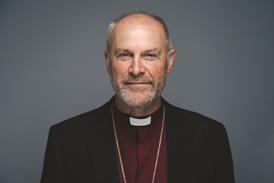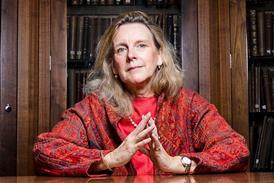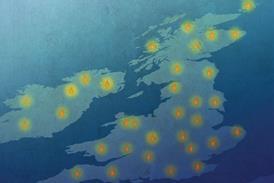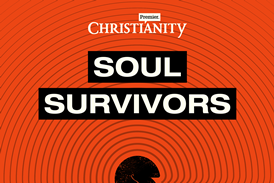Christians are still persecuted in Iran - despite a train station named after the Virgin Mary
By  Steve Dew-Jones2025-10-27T12:51:00
Steve Dew-Jones2025-10-27T12:51:00

Tehran’s Holy Virgin Mary metro station supposedly celebrates the “peaceful coexistence” of religions in Iran. But on International Religious Freedom Day, Steve Dew-Jones reminds us that Christian converts still face extreme persecution
Did you hear the news? Iran has recently made the surprise move of naming a Tehran metro station after the Virgin Mary. The newly upgraded station, now called Maryam-e Moqaddas - Persian for Holy Virgin Mary - features Christian-themed art and is located near Saint Sarkis Armenian Cathedral, the main hub for the city’s Armenian Christian community.
It’s just the sort of news one might hope to hear on International Religious Freedom Day. Except that, as is often the case in Iran, it isn’t quite as positive as it sounds.
The Iranian authorities and the state media tell us that the renaming is symbolic of the “peaceful coexistence” of religions in Iran. But such coexistence is only available to those born within ethnic minority families considered Christian in origin, such as Armenians and Assyrians - and provided that they are willing to accept certain conditions. This includes, for example, not talking about their faith with “Muslim-born” Iranians, nor permitting Persian speakers to attend their services.
Related articles
-
 Magazine Features
Magazine FeaturesWe've learned all we can from US megachurches. Let's be inspired by the Global Majority Church
2025-08-28T12:54:00Z By Nick Page
The problem with Christianity in the UK is that we’re looking in the wrong direction, says Nick Page. It’s time to stop assuming our brothers and sisters across the pond have all the answers, and look to the example of Christians in the Majority World
-
 Opinion
OpinionCasting the last stone? Why the punishment of stoning persists around the world
2025-07-11T08:25:00Z By Ben Cohen
Today is the International Day Against Stoning. It may seem barbaric that this method of corporal punishment still exists, says Ben Cohen, but it does. Here’s why Christians should care
-
 Testimonies
Testimonies‘I pretended to be a Christian, but God transformed my life for real’
2024-09-27T14:19:00Z
Kia Hadaeghi falsely sought asylum in the UK as a persecuted Christian – even though he was a Muslim. But an encounter with God changed his life. Now he’s on a mission to reach Iranians all over the world with the hope of Jesus
More from Opinion
-
 Opinion
OpinionWhy Unite the Kingdom’s Christmas rally misses the point of Christianity
2025-12-11T09:38:00Z By George Pitcher
If Tommy Robinson is misapproriating the Christian faith for his own politcal purposes, Christians should appropriate it right back again, says George Pitcher, just as the Church of England bus stop posters have done. Let’s reclaim patriotism and use it for good this festive season
-
 Opinion
OpinionIn public or online, women and girls should be safe from harm
2025-12-10T10:55:00Z By Judith Davey-Cole
Misogyny has moved from the margins into the mainstream, says Judith Davey-Cole. Christian communities have a crucial role to play in educating young people in the digital age
-
 Opinion
OpinionMy song ‘Shine Jesus Shine’ has been voted the no.1 assembly banger. This is how it became an anthem
2025-12-09T14:01:00Z By Graham Kendrick
Worship leader Graham Kendrick reflects on how his 1987 song ‘Shine Jesus Shine’ has endured across generations, spreading from church halls to Glastonbury Festival and even being voted the nation’s favourite school hymn
- Issues
- Topics A-Z
- Writers A-Z
- © 2025 Premier Christianity
Site powered by Webvision Cloud


























